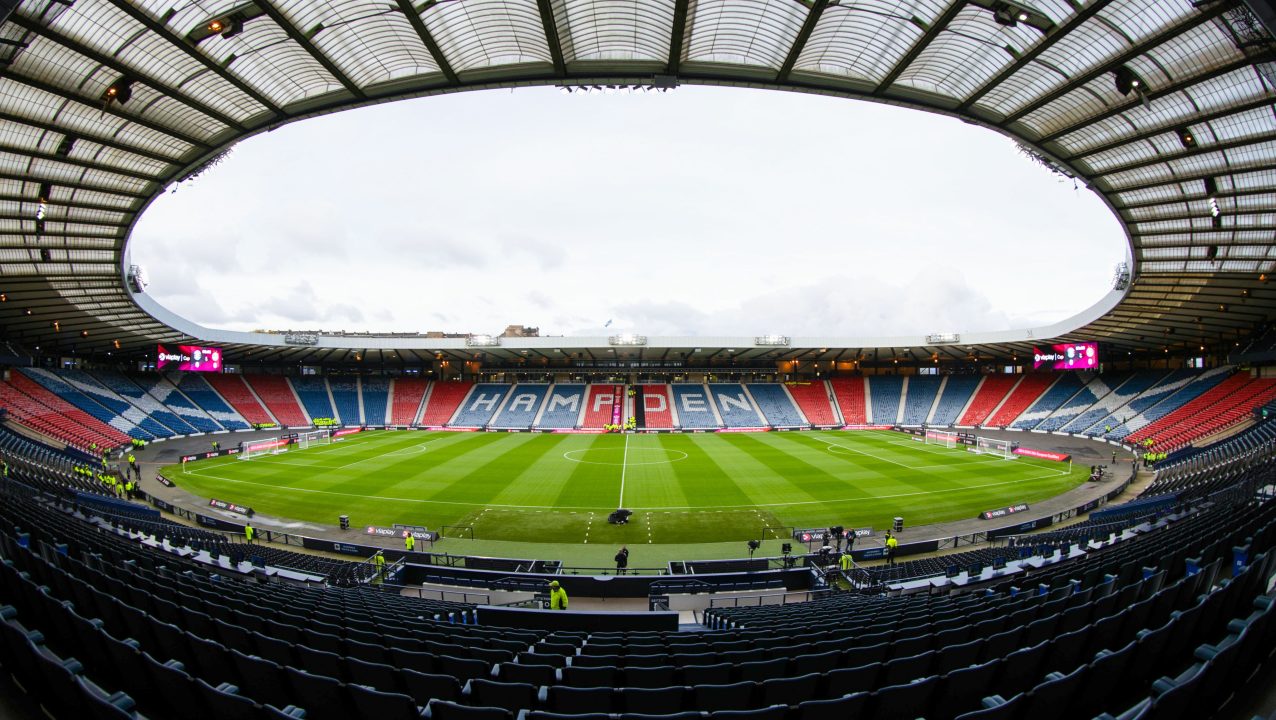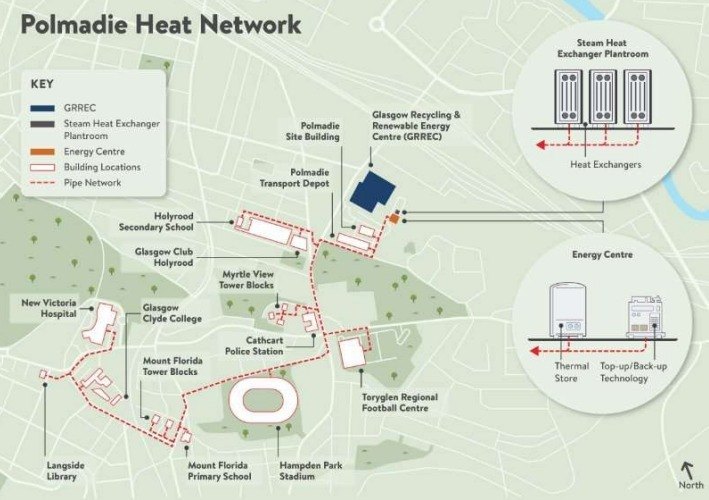A waste centre at Polmadie could provide heat to Hampden Park, a hospital, homes and schools, a study has found.

SNS GroupIt could cost around £24m to build out the network.
Drew Sandelands, Local Democracy Reporter
Posted in Glasgow City
Plans for a heat network using the Glasgow Recycling and Renewable Energy Centre on Polmadie Road could make “substantial inroads” into reducing carbon emissions in the area.
A feasibility study found a network is “technically and economically viable”, council officials have reported.
They added the proposal is “commercially attractive enough to engage the private sector’s interest”.
It could cost around £24m to build out the network.
The report added carbon emissions analysis suggests a 81% reduction is achievable through development of the network, relative to “the continued operation of existing heating systems”.
“These savings are estimated with gas boiler back-up over a 40-year assessment period.”
A council spokesman said: “How we heat our homes and other buildings is one of the big challenges we face as the city tackles the causes of climate change.
Ad
“But this study shows conclusively that heat produced by the GRREC can be used to warm buildings across a wide area on Glasgow’s southside.
“The heat that comes from household waste processed at the GRREC is fully renewable and would make substantial inroads on the carbon emissions from the buildings in this heat zone area.”

Posted in Glasgow City
Plans for a heat network using the Glasgow Recycling and Renewable Energy Centre on Polmadie Road could make “substantial inroads” into reducing carbon emissions in the area.
A feasibility study found a network is “technically and economically viable”, council officials have reported.
They added the proposal is “commercially attractive enough to engage the private sector’s interest”.
It could cost around £24m to build out the network.
The report added carbon emissions analysis suggests a 81% reduction is achievable through development of the network, relative to “the continued operation of existing heating systems”.
“These savings are estimated with gas boiler back-up over a 40-year assessment period.”
A council spokesman said: “How we heat our homes and other buildings is one of the big challenges we face as the city tackles the causes of climate change.
Ad
“But this study shows conclusively that heat produced by the GRREC can be used to warm buildings across a wide area on Glasgow’s southside.
“The heat that comes from household waste processed at the GRREC is fully renewable and would make substantial inroads on the carbon emissions from the buildings in this heat zone area.”

The Polmadie heat network plan included in a Glasgow City Council report.
The study on a Polmadie district heat network was carried out by consulting engineering firm Buro Happold.
It was hoped it would build “confidence that district heat networks are technically and economically viable in locations across the city”.
A council report added: “A potential benefit to the GRREC is that heat generation from the waste resource is significantly more efficient than electrical generation, therefore heat supply to a network could significantly improve the overall energy efficiency of the facility.”
An image included in the report shows a pipe network linked to Hampden Park, the New Victoria Hospital, Langside Library, Holyrood Secondary School and Cathcart Police Station.
It also displays Toryglen Regional Football Centre, Glasgow Clyde College, Mount Florida Primary School and two blocks of flats.
The feasibility report proposed that “heat exchange equipment for the EfW supply be sited on the GRREC site, with an energy centre building, housing back-up boilers and thermal storage, on adjacent GCC land”.
Council officials added there is “good alignment between the specific heat source at GRREC considered and the demand identified within the core cluster”.
A council spokesman said: “The possibility of a district heating network sourced from the GRREC can also help to attract inward investment and create the infrastructure that can support the push for net zero.
“The GRREC produces reliable heat and this study shows investors should be confident of a return on any investment.
“We are at an early stage with this initiative but we have grounds for optimism that using energy from waste to heat homes and other buildings is realistic and achievable.”
The study on a Polmadie district heat network was carried out by consulting engineering firm Buro Happold.
It was hoped it would build “confidence that district heat networks are technically and economically viable in locations across the city”.
A council report added: “A potential benefit to the GRREC is that heat generation from the waste resource is significantly more efficient than electrical generation, therefore heat supply to a network could significantly improve the overall energy efficiency of the facility.”
An image included in the report shows a pipe network linked to Hampden Park, the New Victoria Hospital, Langside Library, Holyrood Secondary School and Cathcart Police Station.
It also displays Toryglen Regional Football Centre, Glasgow Clyde College, Mount Florida Primary School and two blocks of flats.
The feasibility report proposed that “heat exchange equipment for the EfW supply be sited on the GRREC site, with an energy centre building, housing back-up boilers and thermal storage, on adjacent GCC land”.
Council officials added there is “good alignment between the specific heat source at GRREC considered and the demand identified within the core cluster”.
A council spokesman said: “The possibility of a district heating network sourced from the GRREC can also help to attract inward investment and create the infrastructure that can support the push for net zero.
“The GRREC produces reliable heat and this study shows investors should be confident of a return on any investment.
“We are at an early stage with this initiative but we have grounds for optimism that using energy from waste to heat homes and other buildings is realistic and achievable.”
No comments:
Post a Comment